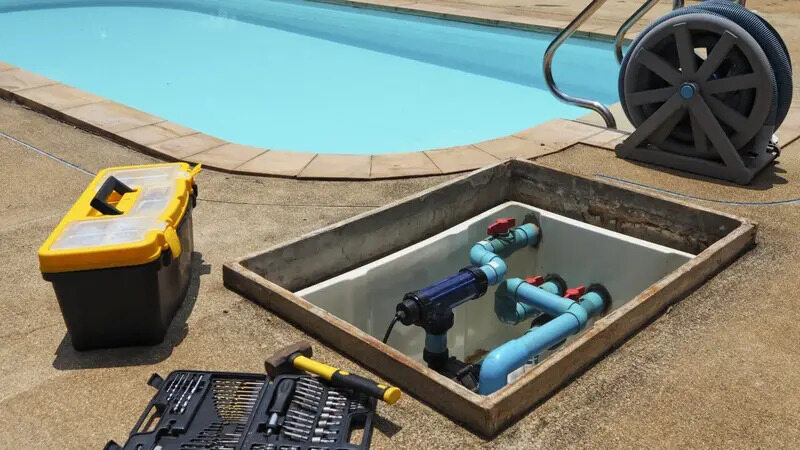Introduction
Having a pool, whether residential or commercial, can make your space so much more fun and relaxing. It’s a place where you can unwind after a long day, stay active, or hang out with friends and family. But like anything, a pool needs regular care to stay in good shape, and this includes occasional swimming pool repairs.
Over time, every pool can have problems. You might notice leaks, cracks, or issues with the equipment that make the pool not work as well or be as enjoyable. Even small things like algae or stains can become a problem if you don’t deal with them.
In this guide, we will cover the most common pool problems and repairs. Keep your pool welcoming, safe, and looking beautiful for you, your loved ones or customers to enjoy.
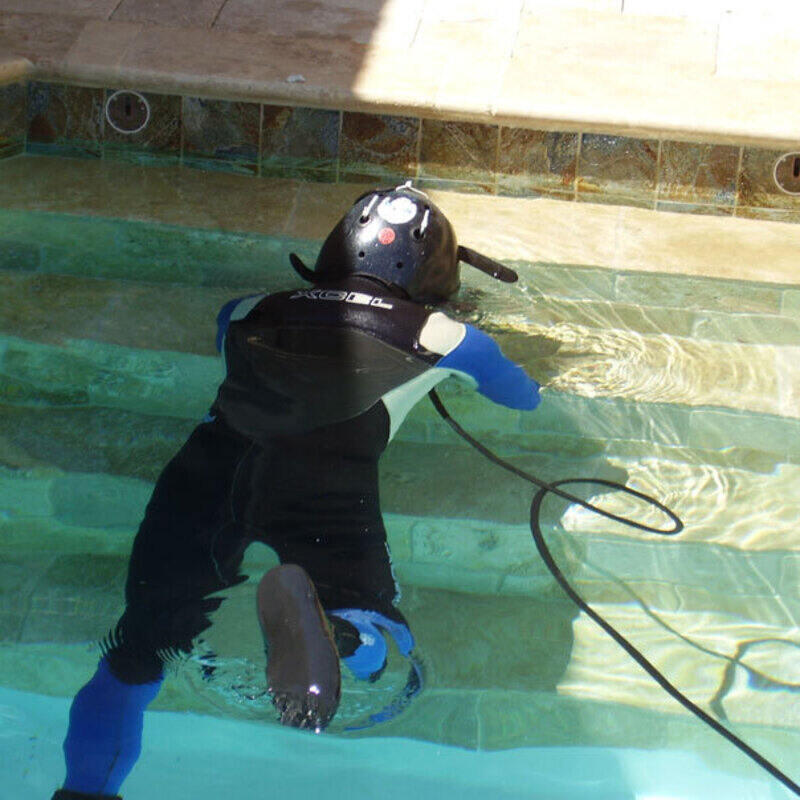
1. Swimming Pool Leaks
Understanding the Causes:
Leaks in swimming pools can originate from multiple sources, each posing unique challenges. Common causes include:
- Cracks in the Pool Shell: Structural cracks can develop in concrete, gunite, or fibreglass pools due to ground shifting, freeze-thaw cycles, or impacts.
- Faulty Plumbing: Leaks may occur in the pipes that carry water to and from the pool. These can result from cracks, joint failures, or improper installation.
- Worn-Out Seals: Seals around skimmers, drains, and fittings can degrade over time, leading to water loss.
Effective Swimming Pool Repair:
Detecting and repairing swimming pool leaks requires a systematic approach:
- Leak Detection Methods: Professionals use a variety of techniques to locate leaks, including dye tests (which help trace water flow), pressure tests (to identify weaknesses in plumbing), and electronic leak detection systems (which use sensors to pinpoint leaks).
- Repair Techniques: Depending on the leak’s source, solutions may include:
- Crack Repair: Use hydraulic cement or epoxy for concrete pools, and specialized patching materials for fiberglass pools.
- Plumbing Repairs: Replace damaged pipes or fittings, and ensure all joints are properly sealed.
- Seal Replacement: Reseal areas around skimmers, drains, and fittings with high-quality sealants.
Prompt attention to leaks is essential to prevent water wastage, structural damage, and increased repair costs.
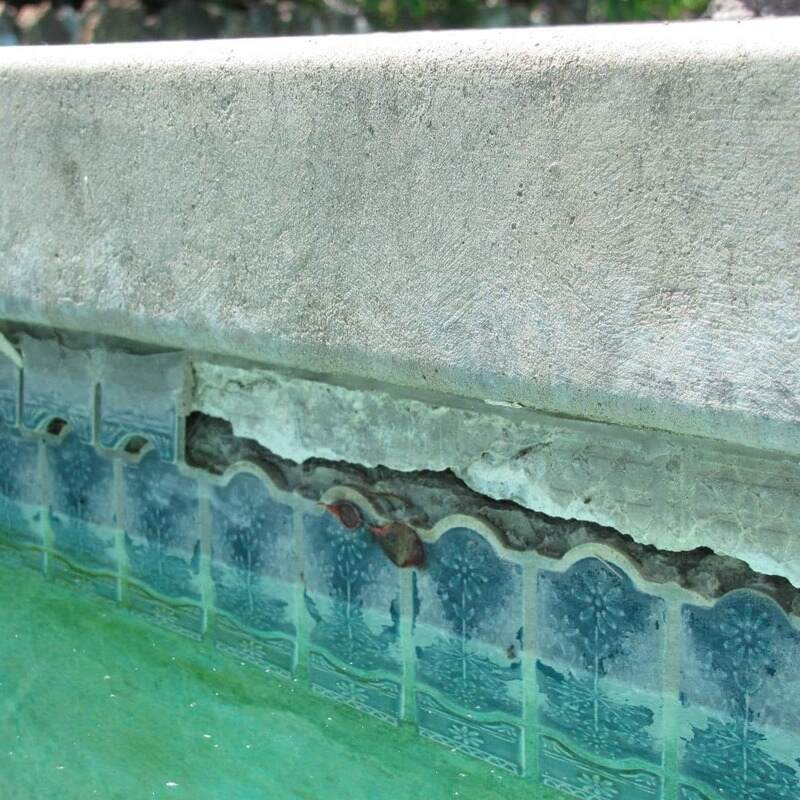
2. Cracked or Damaged Swimming Pool Surfaces
Understanding the Causes:
Cracked or damaged surfaces not only detract from the pool’s appearance but can also pose safety hazards:
- Shifting Ground: Movement in the soil beneath the pool can lead to cracks in the pool shell.
- Freeze-Thaw Cycles: In regions with cold winters, repeated freezing and thawing can cause surface damage.
- Heavy Impacts: Dropped objects or heavy equipment can crack pool surfaces.
Effective Swimming Pool Repair:
Repairing damaged pool surfaces depends on the pool type:
- Concrete Pools: Resurfacing is often necessary. Options include:
- Plaster: A traditional and cost-effective option that provides a smooth finish.
- Pebble Tec: A durable, textured finish that adds a natural look and enhances longevity.
- Aggregate: Mixtures of pebbles and other materials that offer a unique appearance and extra resilience.
- Fiberglass Pools: Typically require gel coat repair or full resurfacing. Gel coat can be patched or replaced to address surface damage.
- Vinyl-Lined Pools: These usually involve liner replacement. Regular inspections can help identify issues early, preventing more extensive damage.
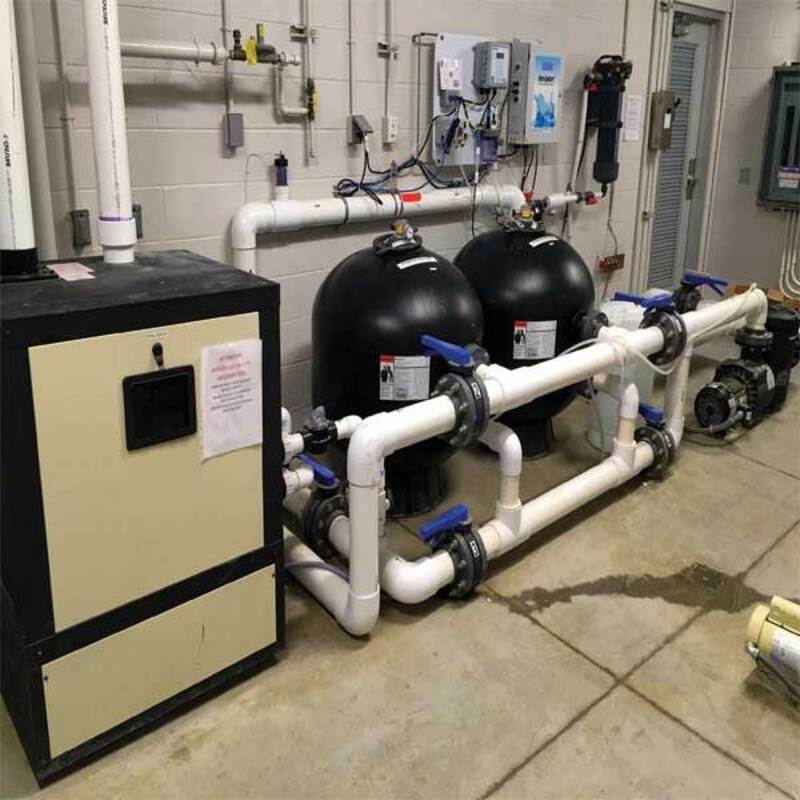
3. Swimming Pool Equipment Malfunctions
Understanding the Causes:
Pool equipment is crucial for maintaining water quality and circulation. Common issues include:
- Wear and Tear: Over time, parts like pumps, filters, and heaters can wear out and fail.
- Improper Maintenance: Neglecting routine upkeep can lead to equipment malfunctions.
- Manufacturing Defects: Occasionally, equipment may fail due to defects or subpar quality.
Effective Solutions:
Regular maintenance and timely swimming pool repairs are key to ensuring your pool equipment functions properly:
- Preventive Maintenance: Follow manufacturer guidelines for regular servicing. This includes cleaning filters, checking water levels, and inspecting equipment for wear.
- Diagnosis and Swimming Pool Repair: When equipment fails, a professional technician can diagnose the problem and recommend solutions, such as:
- Replacing Worn Parts: Pumps, filters, and heaters often require new components.
- Upgrading Equipment: Newer models may offer improved efficiency and features.
- Professional Servicing: For complex issues, seek assistance from qualified pool service providers.
Maintaining equipment in good working order helps ensure efficient operation and reduces energy costs.
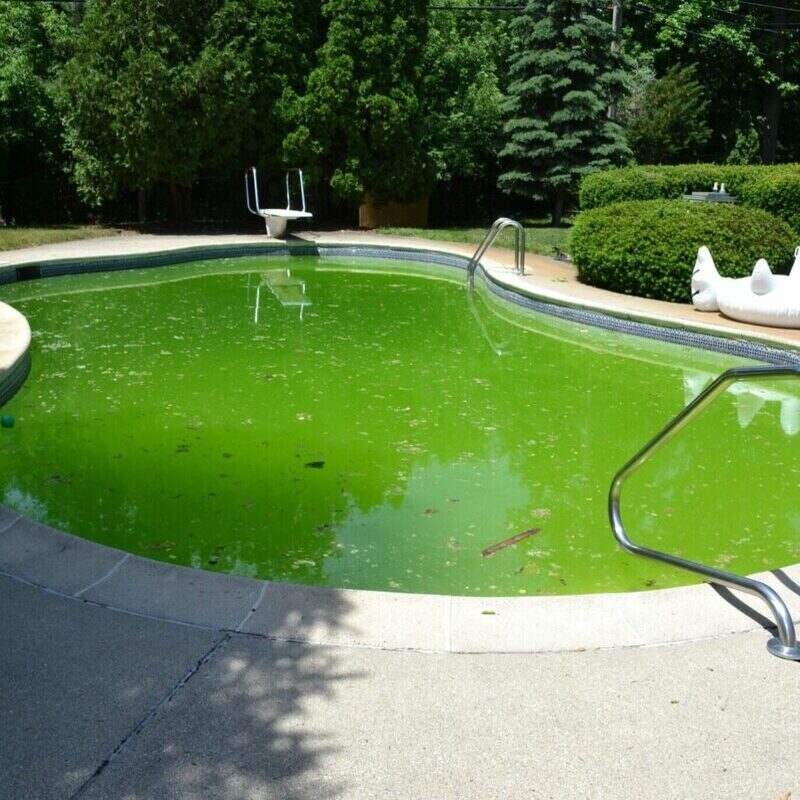
4. Algae and Staining in Swimming Pools
Understanding the Causes:
Algae and staining can affect the pool’s cleanliness and aesthetics:
- Algae Growth: Often results from poor water chemistry, inadequate circulation, or contamination.
- Staining: This can be caused by metal deposits (e.g., iron or copper), organic matter, or chemical imbalances.
Effective Solutions:
Addressing algae and stains requires specific treatments:
- Algae Removal:
- Chemical Treatments: Use algaecides to target and eliminate algae. Shock treatments with chlorine or other sanitizers can also help.
- Cleaning: Brush and vacuum the pool thoroughly to remove algae and debris.
- Stain Removal:
- Acid Washes: Effective for removing tough stains from pool surfaces.
- Stain Removers: Specialized products can treat stains caused by metals or organic matter.
- Metal Sequestrants: Prevent and treat stains caused by metal deposits.
Maintaining balanced water chemistry and regular cleaning is critical to preventing algae and staining.
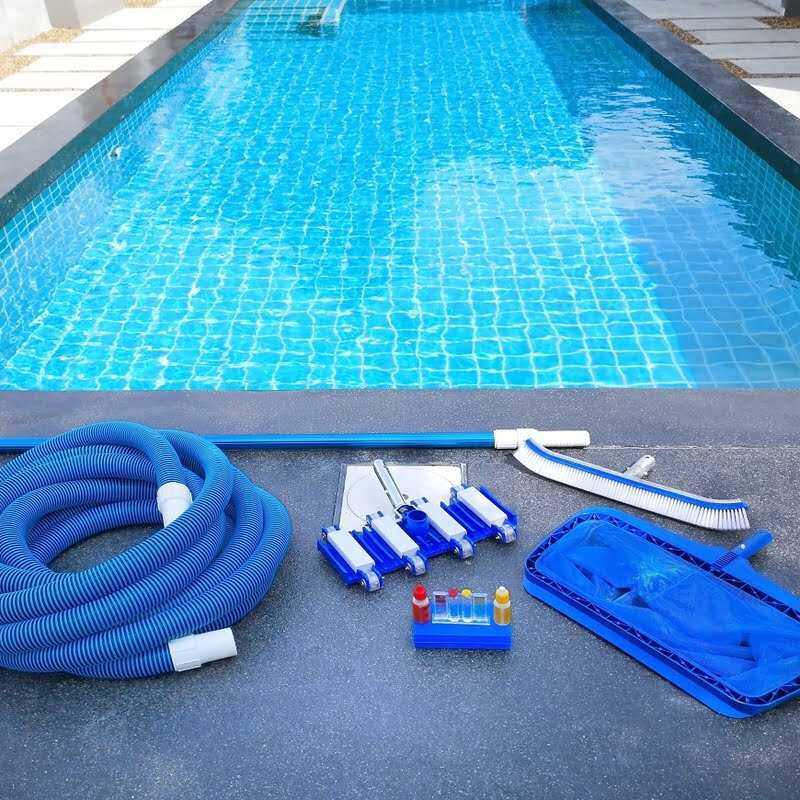
Maintaining Your Swimming Pool
Consistent swimming pool maintenance is crucial for preventing issues and prolonging the life of your pool:
- Weekly Cleaning: Skim debris, vacuum the pool, and brush the walls to remove buildup and keep the pool clean.
- Water Testing: Regularly check and adjust water chemistry to maintain balanced pH, chlorine levels, and overall water quality.
- Equipment Checks: Inspect and clean filters, pumps, and heaters to ensure they operate efficiently.
- Seasonal Care: Adjust maintenance routines for different seasons, such as winterizing the pool in colder climates or preparing it for summer use.
Conclusion
Maintaining a swimming pool involves more than just routine cleaning and occasional upkeep; it requires vigilance and timely intervention to address common issues that can impact the pool’s safety, functionality, and look. From managing leaks and surface damage to troubleshooting equipment malfunctions and tackling algae and staining, understanding the root causes and implementing effective repair strategies are crucial for preserving the integrity of your pool.
Remember, a well-maintained pool not only enhances your home’s value but also provides a safe and inviting space for family and friends.
Contact Us for Your Swimming Pool Repairs
By choosing You-Swim, you’re not just getting a service; you’re investing in peace of mind. We are committed to high-quality work and customer satisfaction, ensuring every part of your pool is carefully taken care of. With our help, you can avoid expensive repairs and enjoy a clean, beautiful pool.
Let us help you keep your pool looking and working great without causing any further damage to your swimming pool.
Click here to find out why you should choose us for your swimming pool repairs and maintenance.
Don’t hesitate to reach out with any questions or inquiries.


